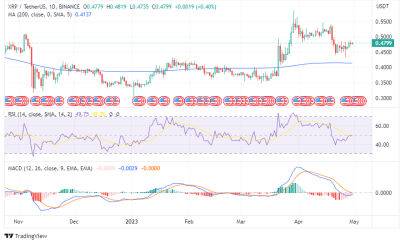3 key Ethereum price metrics cast doubt on the strength of ETH’s recent rally
Ether (ETH) price had been battling the $1,850 resistance level, but it broke through on April 4 when Ether rallied to a 7-month high above $1,900. Recently there has been a lot of speculation on Ether price catalysts, let’s see if it’s possible to identify any fundamental factors behind the price movement.
The upcoming Shanghai hard fork could be one factor in Ether’s recent bullish momentum. On April 12, the ability for validators to withdraw their deposits opens, giving staking participants freedom of movement, but also t creating a sell-off risk for Ether.
There are now 17.81 million Ether staked on the Beacon Chain, though some safeguards have been put in place to prevent a flood of Ether from disrupting the market. For example, because there is a daily limit of 2,200 withdrawals, the maximum daily unlocks are 70,000 ETH.
The upcoming Shanghai fork, however, does not address some of the most pressing issues currently plaguing the Ethereum network. Scalability continues to be a major issue for most users, as the average transaction fee has hovered around $5 in recent weeks, driving users away from decentralized applications. (Dapps).
Furthermore, the current consensus mechanism favors rogue miners who outperform other network participants, a phenomenon known as miner extractable value. (MEV). They can quickly duplicate all winning deals from the mempool and execute their transactions ahead of others by ultimately deciding which transactions are completed in the block.
A recent example, highlighted on April 3 by security firm CertiK, resulted in $25 million in losses to arbitrage bots that were attempting to purchase and flip tokens in a short period of time for a profit as a selfish validator replaced the transactions.
Ov
Read more on cointelegraph.com










